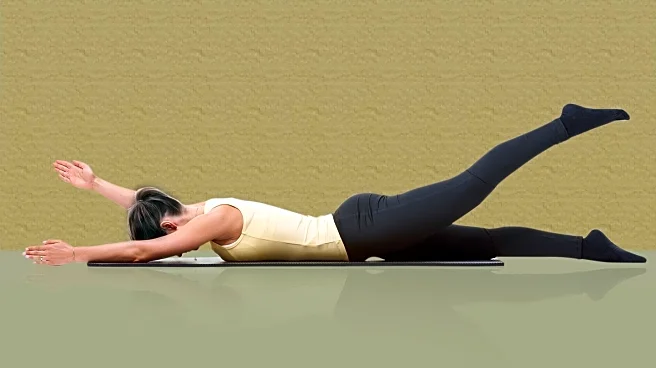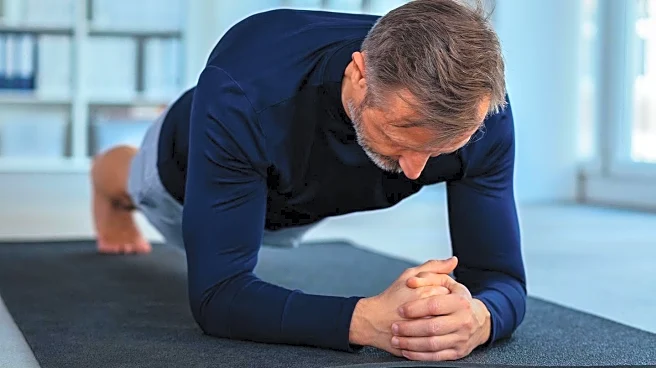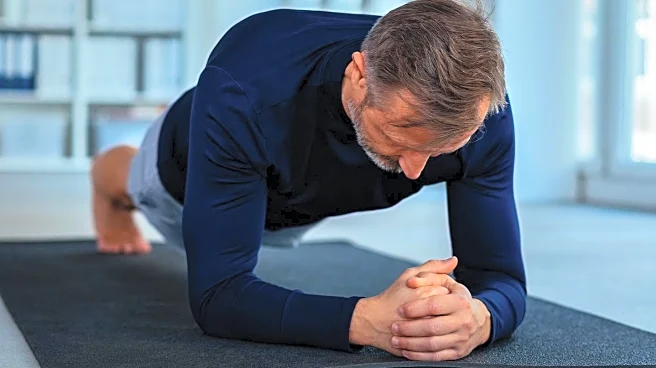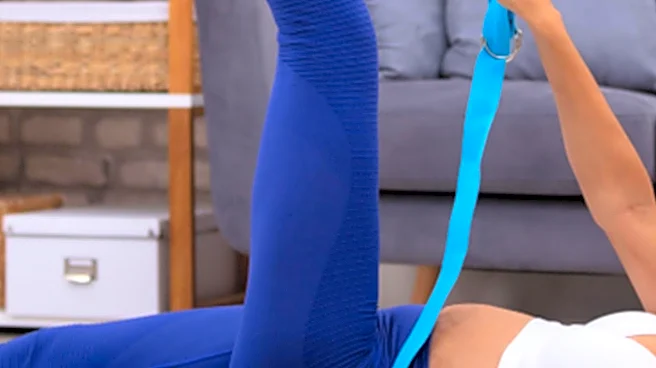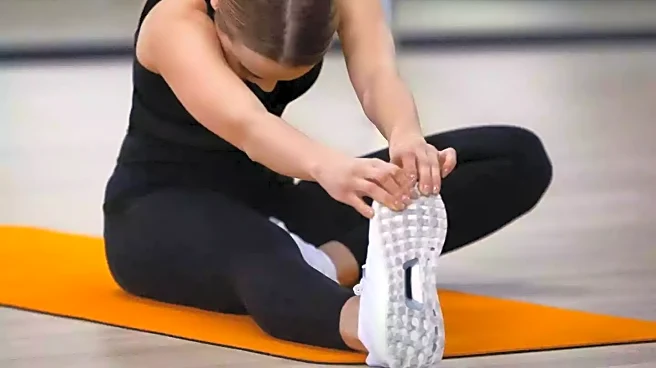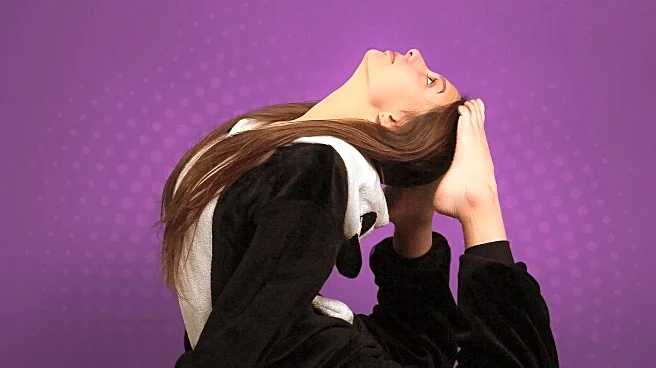What's Happening?
Jill Drummond, a NASM-certified personal trainer and Pilates instructor, has shared a beginner-friendly routine aimed at easing lower back pain. The routine includes three exercises: Swan to Child's Pose, Half Roll-back with Bow and Arrow, and Mermaid Stretch. These exercises are designed to improve spinal mobility, strengthen the core, and promote flexibility. Drummond emphasizes the importance of addressing muscle tightness, postural imbalances, and lifestyle habits to maintain a healthy, pain-free lower back. The exercises focus on engaging the abdominals, glutes, shoulders, and chest, while encouraging mindful breathing.
Why It's Important?
Lower back pain is a common issue, especially for individuals who spend long hours sitting or working at a desk. Poor posture can lead to strain on the spine, resulting in stiffness and discomfort. Drummond's routine offers a practical solution for those seeking relief from back pain without the need for medication or invasive treatments. By focusing on strengthening and mobility work, individuals can potentially reduce their pain and improve their overall well-being. This approach highlights the significance of physical activity and targeted exercises in managing and preventing back pain.
What's Next?
Individuals experiencing lower back pain may consider incorporating Drummond's routine into their daily exercise regimen. As awareness of the benefits of Pilates and targeted exercises grows, more people may seek out similar routines to address their back pain. Fitness professionals and healthcare providers might also recommend such exercises as part of a comprehensive approach to managing back pain. Continued research and education on the effectiveness of Pilates for back pain relief could further validate these methods.
Beyond the Headlines
The emphasis on non-invasive methods for managing back pain reflects a broader trend towards holistic health and wellness practices. As people become more conscious of the impact of lifestyle on their health, there is a growing interest in preventive measures and natural remedies. This shift may lead to increased demand for fitness programs that focus on mobility, flexibility, and core strength, potentially influencing the fitness industry and healthcare practices.
